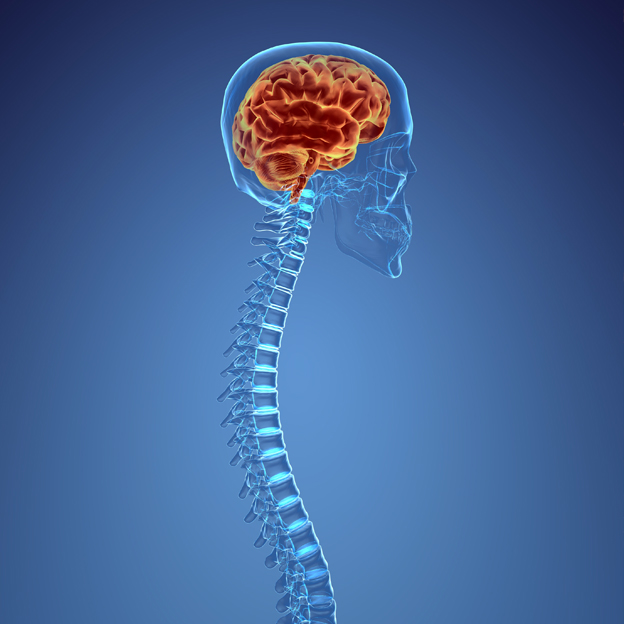Have you ever picked up a heavy box incorrectly, and immediately felt pain in your back? While the pain is instant, the length and severity of this injury can vary. But why did you feel this pain so quickly? You can thank your Central Nervous system for that, and while at first this may seem like a hassle, feeling pain is actually a very good thing. If we didn’t feel pain, we might push our bodies to limits they can’t recover from.
According to The University of Queensland, there are two main parts of the nervous system: the Central Nervous System (CNS) and the Peripheral Nervous System (PNS). Today, we will be discussing the CNS, but it is important to note that the PNS relates to the nerves that branch out from the spinal column to the different parts of your body. These nerves send messages back to the CNS, where the entire body is able to communicate.
The Central Nervous System is comprised of two large areas, which include the spinal cord and the brain. These two areas are critical to how the body communicates with itself, and are guarded by the skull and the bones around the spinal cord. The brain is in control of our thoughts, and is the center of where we process our body’s information.
Based on information from Johns Hopkins Medicine, the brain is comprised of three main parts: the cerebrum, cerebellum, and the brain stem. The cerebrum is the large, pink, wavy area of the brain that is most commonly seen in media, and is pictured above. The cerebrum is in control of our senses (sight, smell, etc.) and our abilities to think, learn, and speak. The second part of the brain is the cerebellum, and is located towards the back of the brain. This area is in control of coordination, muscle movements, and balance. The third part of the brain is the brain stem, and this area connects the brain to your spinal cord. The brain stem is what allows messages that have traveled from the spinal cord to be processed within the brain.
Similarly, the spinal cord has different functions that allows your body and brain to communicate about your pain. According to Medical News Today, the three functions of the spinal cord are carrying messages to the brain, carrying messages from the brain to the body, and reflex responses. Reflex responses refer to an action involving our motor reflexes, and they do not require a message to be sent to the brain. An example of this is the knee jerk response that you might be tested for at a doctor’s office.
The spinal cord is comprised of nerve cells, and these cells are in charge of creating movement and sensation throughout the body. As a result, any injury to the spinal cord can result in serious effects to the body, and any break or injury in the spinal cord can damage how the body communicates with itself.
So how does the message of constant back pain get to your brain? The answer is actually neurons. According to the Reeve Foundation, neurons send and receive messages to each other along the spinal cord, and eventually, these messages get sent to and within the brain. These messages are constantly being sent, despite if you are making a conscious or unconscious decision to do so. This is possible because there are around 100 billion neurons in the spinal cord and brain, and they are constantly working to make sure your body stays alive and in proper function.
The brain and spinal cord are incredibly sensitive, and thus are prone to extreme injuries. Motor vehicle accidents, falls, and other incidents can cause significant damage to these areas that can have life altering impacts, and have extreme effects on your quality of life if not treated correctly. Pain management is essential to recovery from brain and spinal cord injuries, and Healthpointe is equipped to help you. We have several doctors who specialize in neurosurgery, spinal surgery, spinal disorders, and much more. Our skilled doctors commonly perform surgeries such as discectomy, foraminotomy, laminectomy, lumbar spine fusion, and kyphoplasty, so that your condition can be improved.
Careful thought and testing is put into consideration for each procedure, so that the different needs of each patient are met. Click here to find a full list of our doctors, and to see what they have to offer; if you have been recently injured and are still feeling symptoms, you can book an appointment through the Healthpointe website, or call (888) 824-5580 to schedule today.



